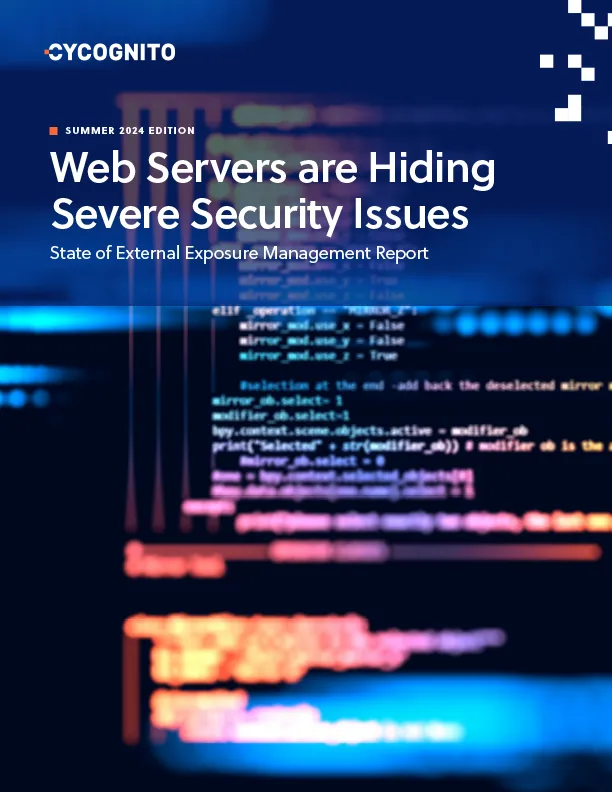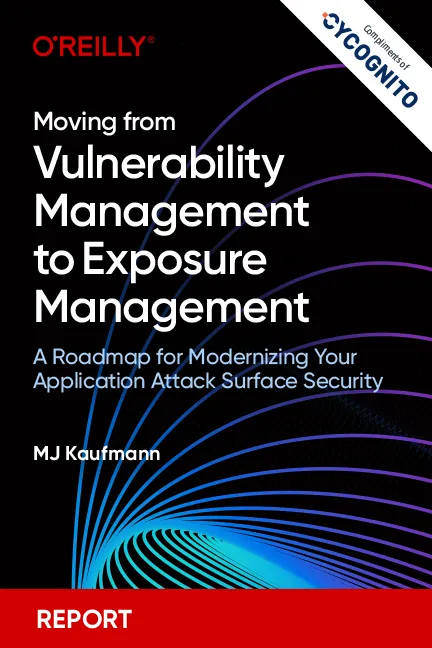Notable Cyber Risk Management Frameworks
Cybersecurity risk management frameworks provide a structured approach to identifying, assessing, and mitigating cyber risks. These frameworks serve as a guide for organizations in developing and implementing their cybersecurity programs. Here are several globally recognized risk frameworks your organizations can adopt.
NIST CSF
The National Institute of Standards and Technology's Cybersecurity Framework (NIST CSF) is a voluntary framework, primarily aimed at critical infrastructure organizations, which helps manage and mitigate cybersecurity risk based on existing standards, guidelines, and practices.
The NIST CSF is built around five core functions:
- Identify: Helps organizations understand their business context, resources, and risk.
- Protect: Assists organizations in developing and implementing appropriate safeguards.
- Detect: Focuses on implementing appropriate activities to identify cybersecurity events.
- Respond: Ensures a timely response to detected cybersecurity events.
- Recover: Focuses on maintaining plans for resilience and restoring capabilities or services impaired due to a cybersecurity event.
NIST 800-53 Controls
NIST 800-53 Controls is a document that helps organizations adopt the CSF framework, by providing a detailed list of security controls. It is mandatory for federal information systems and organizations, although it has also been adopted widely in the private sector due to its comprehensive approach.
NIST 800-53 provides a catalog of security and privacy controls that are customizable to fit different risk environments. The controls are divided into 20 families, each targeting different aspects of information security. The framework also provides guidelines for selecting appropriate security controls based on the organization’s mission, function, and information systems.
NIST 800-171 Controls
The NIST 800-171 controls, also known as the "Protecting Controlled Unclassified Information in Nonfederal Systems and Organizations," is a set of requirements that non-federal entities must follow to protect sensitive federal information. Like NIST 800-53, it is a supporting document that helps organizations adopt the CSF framework.
NIST 800-171 consists of 11 families of security requirements that organizations need to implement. These requirements cover areas such as access control, audit and accountability, incident response, maintenance, and system and information integrity, among others. The NIST 800-171 controls aim to ensure that sensitive federal information remains confidential and is not compromised when processed, stored, and used in nonfederal systems and organizations.
ISO 27001
The International Organization for Standardization (ISO) 27001 is a globally recognized standard for information security management systems (ISMS). It provides a systematic approach to managing sensitive company information and ensuring it remains secure.
The ISO 27001 standard uses a top-down, risk-based approach and is technology-neutral. It includes requirements for establishing, implementing, maintaining, and continually improving an ISMS. The standard also includes requirements for the assessment and treatment of information security risks tailored to the needs of the organization.
ISO 27002
ISO 27002, also known as Code of Practice for Information Security Controls, is a companion document to ISO 27001. While ISO 27001 provides a framework for an ISMS, ISO27002 provides best practice recommendations on information security management.
The standard covers 14 domains of information security, including security policy, organization of information security, asset management, human resources security, physical and environmental security, communications and operations management, access control, information systems acquisition, development and maintenance, information security incident management, business continuity management, and compliance.
PCI-DSS
The Payment Card Industry Data Security Standard (PCI-DSS) is a set of security standards designed to ensure that all companies that accept, process, store, or transmit credit card information maintain a secure environment.
The PCI-DSS framework outlines a series of steps to protect cardholder data, including building and maintaining a secure network, protecting cardholder data, maintaining a vulnerability management program, implementing strong access control measures, regular monitoring and testing of networks, and maintaining an information security policy.
Center for Internet Security (CIS) Controls
The Center for Internet Security (CIS) controls is a set of 18 actionable controls (known as the CIS 18) that provide a roadmap for improving an organization's cybersecurity posture. They were adapted from a previous framework known as SANS Critical Security Controls (SANS Top 20). The CIS 18, are a prioritized set of best practices created by cybersecurity professionals to stop the most common threats.
The CIS controls cover various aspects of cybersecurity, including basic controls such as inventory and control of hardware assets, continuous vulnerability management, and controlled use of administrative privileges.
They also include foundational controls like secure configuration for hardware and software, boundary defense, and data protection, and organizational controls like incident response and management, penetration tests and red team exercises, and application software security.
Developing Your Cyber Risk Management Strategy: Tips for Success
Here are a few best practices that can help you create a successful cyber risk management strategy.
Establish a Strong Governance Structure
Establishing a governance structure means setting up a framework that defines roles, responsibilities, and processes related to cybersecurity.
A good governance structure should involve all levels of the organization, from the board and management to the IT department and employees. This is because cybersecurity is not just an IT issue, but a business one that can have significant financial and reputational implications.
The governance structure should also be flexible and adaptable, capable of responding to the rapidly changing cybersecurity landscape. Regular reviews of the governance structure will ensure it remains up-to-date and effective.
Conduct Comprehensive Risk Assessments
Risk assessments should identify and evaluate all potential cybersecurity risks the organization faces. They should be conducted regularly, as new threats and vulnerabilities can emerge at any time. They should also be comprehensive, covering all aspects of the organization, including physical assets, digital assets, employees, and third parties.
The results of risk assessments should be documented and communicated to all relevant stakeholders. This will ensure everyone is aware of the risks and can take appropriate action.
Implement a Layered Defense Strategy
Even the most sophisticated cyber defense cannot provide 100% protection. Therefore, a layered defense strategy is key to mitigating risks.
A layered defense strategy involves multiple layers of security measures, each designed to protect against different types of threats. If one layer fails, the others are still in place to provide protection. This approach is also known as ‘Defense in Depth’
A successful risk management strategy should include a mix of preventive, detective, and corrective controls. Preventive controls aim to stop cyber attacks before they happen, detective controls identify attacks in progress, and corrective controls limit the damage caused by an attack.
Develop Incident Response and Recovery Plans
Despite all efforts to prevent and detect cyber threats, incidents can still occur. Therefore, it's essential to have robust incident response and recovery plans in place.
An incident response plan outlines the steps to be taken in the event of a cyber incident. This includes identifying the incident, containing it, eradicating the threat, and recovering systems and data.
A recovery plan focuses on restoring operations to normal after an incident. This includes strategies for data backup and recovery, business continuity, and disaster recovery.
Integrate Cybersecurity in the Supply Chain
Some of the most devastating cyber attacks in recent years focused on the supply chain, targeting an organization’s vendors and suppliers as a weak link in the security chain.
Integrating cybersecurity in the supply chain means ensuring that all third parties the organization works with have adequate cybersecurity measures in place. Supply chain security also involves ensuring that software and services used by a company do not include vulnerable or malicious software.
How CyCognito Helps Manage Cyber Risk
The CyCognito platform addresses today’s cyber risk requirements by taking an automated multi-faceted approach in identifying and remediating critical issues based on their business impact, rather than focusing on the generic severity of the threat alone. To do this you need a platform that is continuously monitoring the attack surface for changes and provides intelligent prioritization that incorporates organizations context.
The CyCognito platform helps manage cyber risk requirements by:
- Maintaining a dynamic asset inventory with classification of the entire external attack surface, including exposed on-premise and cloud-hosted assets like web applications, IP addresses, domains and certificates, eliminating the need to rely on outdated or incomplete information from collaboration tools, spreadsheets, or emails. This approach significantly reduces the burden of tedious, error-prone and costly processes.
- Actively testing all discovered assets to identify risk. Active testing, including dynamic application security testing, or DAST, uncovers complex issues and validates known issues, with low false positives. Each exploited asset is assigned a security grade based on its criticality to the business.
- Prioritizing critical issues, guiding security teams to focus on the most urgent threats. Our unique risk-based prioritization analysis goes beyond the common vulnerability scoring system (CVSS), and incorporates factors like asset discoverability, asset attractiveness, exploitability, business impact and remediation complexity. Integrated tactical threat intelligence identifies the handful of attack vectors that pose the greatest risk.
- Streamlining communications between remediation teams by providing comprehensive, verifiable evidence for each exploited asset. This evidence includes detailed risk assessments, asset ownership information, and actionable remediation guidance. The platform seamlessly integrates with SIEM, SOAR and ticketing system tools like Jira, ServiceNow and Splunk to facilitate information sharing and collaboration.







 Complimentary Report
Complimentary Report